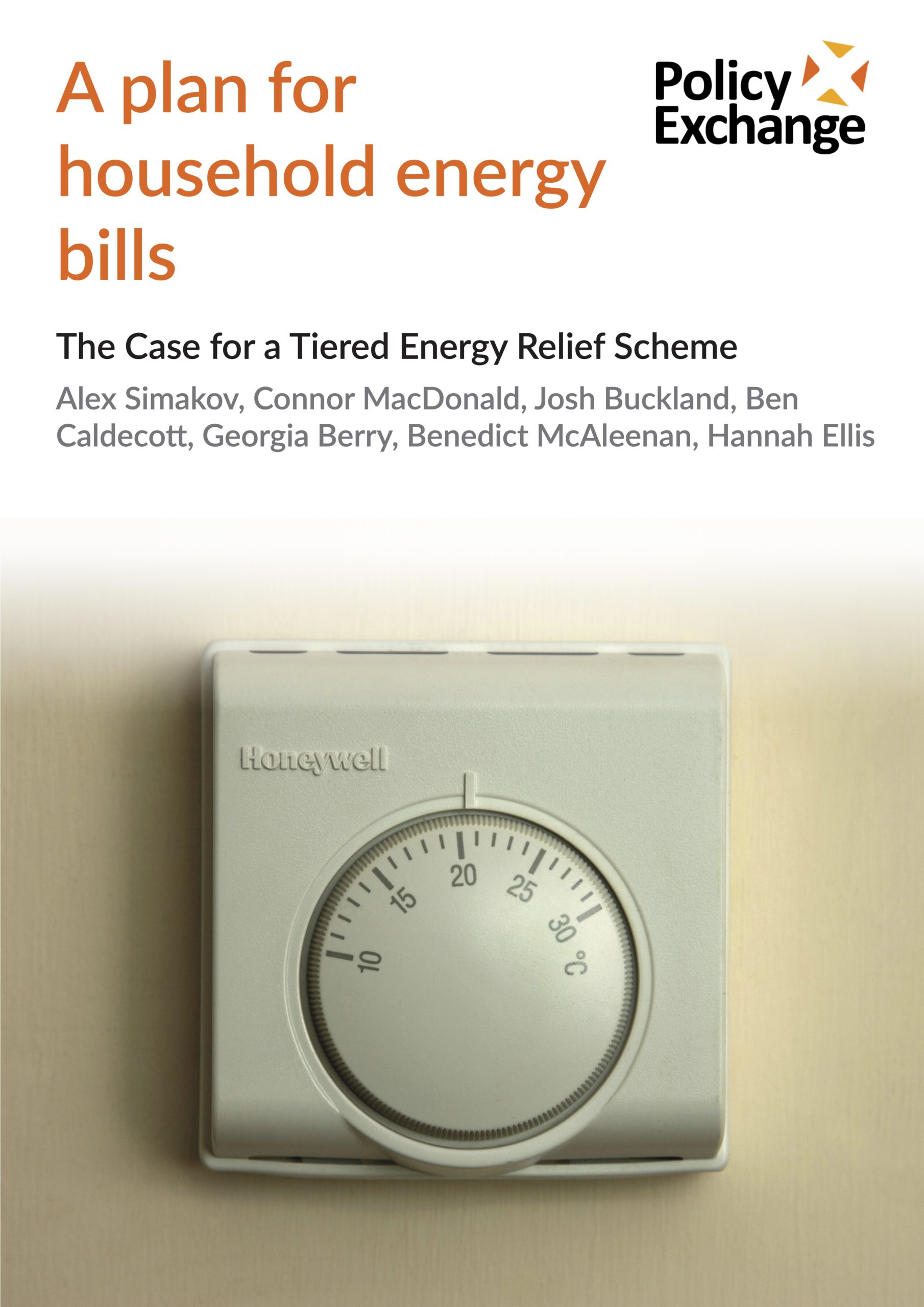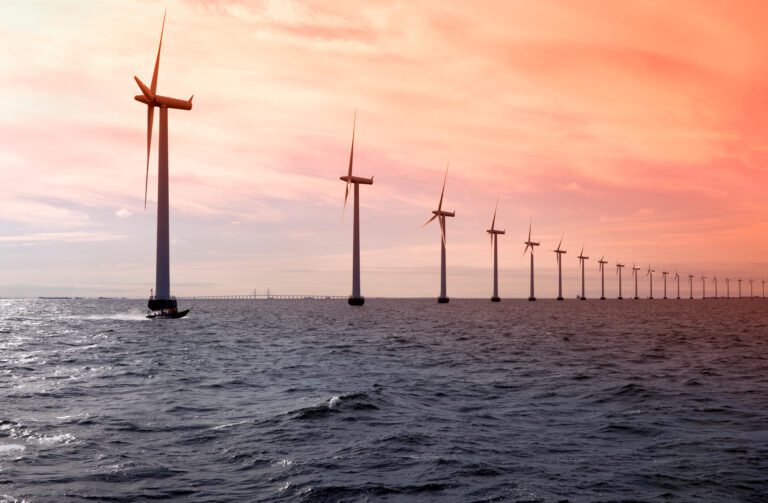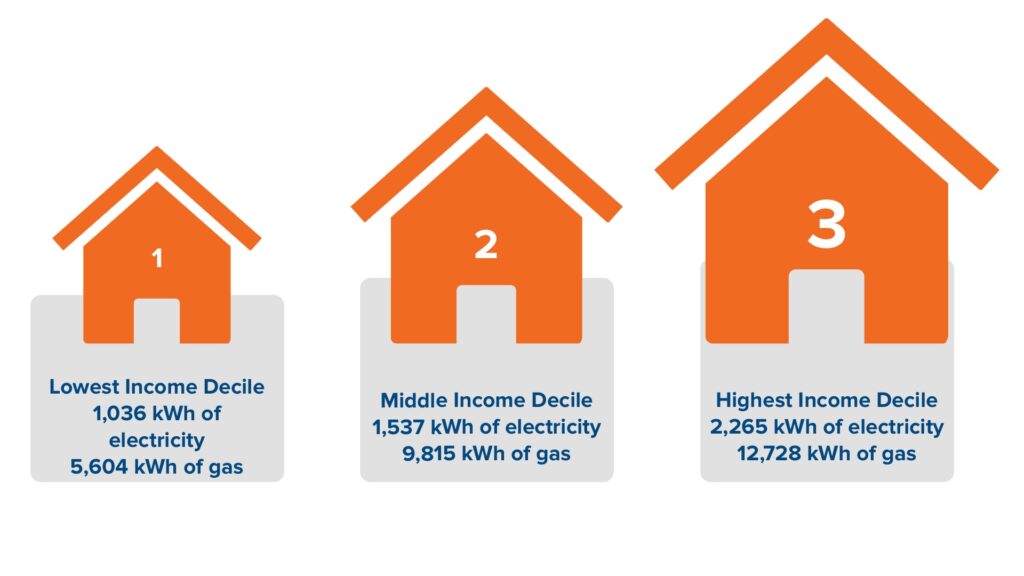Authors
Content
Report Summary
The United Kingdom is in the midst of a dire economic confrontation. The price of our commitment to upholding democratic values in the face of Russian aggression is a severe hike in energy prices, with British households facing a £129bn increase in fuel costs, equivalent to over 5% of GDP1. https://www.carbonbrief.org/analysis-why-uk-energy-bills-are-soaring-to-record-highs-and-how-to-cut-them/.
Last week, Ofgem announced the retail price cap from 1 October will increase to £3,549 per year for dual fuel for an average household2. https://www.ofgem.gov.uk/publications/ofgem-updates-price-cap-level-and-tightens-rules-suppliers — an increase of over 180% from last year, with further increases expected for January 2023. Analysts predict that over half of UK households could fall into fuel poverty this winter, alongside major layoffs as small and large businesses alike struggle to afford their bills. These circumstances are compounded by double digit rates of inflation, undermining most readily available solutions like universal benefits or a price freeze.
Addressing the worst economic crisis in generations will be the new Prime Minister’s first and foremost priority. With mere weeks to implement a comprehensive energy strategy, their immediate objectives will be:
- Delivering relief in time for the October price cap increase and lasting through the winter, while prioritising support for the most vulnerable households.
- Encouraging energy conservation and demand management through accurate market signals, thereby reducing overall costs to households and government.
- Reducing inflationary expectations and managing index-linked public debt servicing, in order to preserve families’ purchasing power and the state’s continued capacity to deliver essential services.
Policy Exchange has developed this paper to propose a series of emergency measures that best deliver these objectives. To reflect the broader economic and fiscal challenges the new Government faces, this proposal is structured around a Tiered Energy Relief Scheme complemented by a targeted welfare package supporting households in greatest need.
The maximum cost of the measures outlined in this paper is £37.3 billion, and would be reduced through energy conservation. Crucially, the Tiered Energy Relief Scheme and targeted welfare package could be readily adjusted to reflect the latest outlook for prices, meaning support can be phased out as and when prices eventually fall.
This proposal focuses on near-term relief for British households. However, there is clearly a need for additional support for businesses and other non-domestic consumers, including schools, hospitals and the parish church. There’s a similarly urgent need for a medium-term energy security strategy to place the nation on stronger footing for economic recovery in 2023 and beyond. These two issues will be addressed by Policy Exchange through forthcoming publications.
Economic Headwinds
The energy crisis is primarily the result of Russia’s retaliation against the Western Alliance for our support of Ukrainian nationhood; economic warfare waged through a denial of natural gas exports to Europe. While Russia accounted for only 4% of the UK’s total energy supply mix3https://commonslibrary.parliament.uk/research-briefings/cbp-9523/, the European Union’s scramble to secure new sources of natural gas has pushed global prices to unprecedented levels. These pressures have similarly affected electricity prices as almost 40% of the UK’s domestic supply is produced through natural gas fired generating stations4https://www.gov.uk/government/statistics/electricity-section-5-energy-trends.
The UK found itself particularly vulnerable to the price shock, purchasing most of its supplies through spot markets, as opposed to paying a premium for long-term, fixed-price Liquified Natural Gas (LNG), as favoured by countries like Japan. These challenges are exacerbated by our relatively diminished natural gas storage capacity, reducing flexibility in procuring fresh supplies.
The current Government is already taking action in the short-term, including through the extension of coal-fired generating stations5https://www.bbc.co.uk/news/uk-england-york-north-yorkshire-62077711 and a forthcoming agreement to bolster the nation’s natural gas storage capacity. Beyond these measures, most other proposals to expand domestic energy supply — from developing advanced nuclear reactors to North Sea oil and gas extraction — require years to operationalise and relieve wholesale prices.
While National Grid is introducing measures6https://www.bbc.co.uk/news/business-62626908 to relieve peak energy demand, we have run out of time to achieve significant further advantages from energy efficiency policies, like improvements to residential insulation. Within the narrow window of opportunity ahead of winter, the only viable options will be to deliver direct support for consumers, and ultimately rely on price signals to encourage conservation. In May, the Government committed to an energy rebate package worth £15 billion7https://www.gov.uk/government/publications/government-support-for-the-cost-of-living-factsheet/government-support-for-the-cost-of-living-factsheet, including £400 to all households and up to an extra £1,200 of benefits to vulnerable households – but far more is required.
However, policy options to subsidise household costs are constrained by the concurrent cost-of-living crisis. Universal hand-outs at the level required would inevitably accelerate the UK’s double digit price inflation, further eroding household purchasing power and leaving families worse off. A total government-funded ‘freeze’ on energy costs would be equally problematic, offering wealthiest households the greatest benefits, while eroding market signals to reduce consumption that would only help Vladimir Putin. A household in the top income decile, which on average consumes in the six months between October and March 2,265 kWh of electricity and 12,728 kWh of gas8Medians taken from SERL Non-Domestic dataset, and deciles calculated from relative proportions from the Centre for Sustainable Energy DIMPSA dataset., would receive more than double the benefits of a household in the lowest decile, which averages only 1,036 kWh of electricity and 5,604 kWh of gas in the six months9 Ibid..
A fundamental challenge to a more targeted cost reduction is the utility companies’ lack of visibility into their customers’ household income levels. And given the unknowable longevity of the global energy shortage, the overwhelming cost of either of these schemes could undermine the Treasury’s capacity for providing support through 2023 and beyond.
Tiered Energy Relief Scheme & Targeted Support Package:
Track One
Policy Exchanges recommends a two-track approach to supporting households. First, the Government would initiate a Tiered Energy Relief Scheme (TERS) to enable a restructuring of household energy bills for a 6-month period, with the option for extension, that will provide meaningful support for families. This would be funded through the creation of a dedicated Government funding envelope to finance these costs, and would be settled through general taxation over a period of 10 to 20 years, a less regressive recovery method than relying on future billpayers.
In line with the commitments made during the current leadership contest, this new funding envelope would immediately absorb the current cost of Value Added Taxes and Green Levies on all residential energy bills, reducing household costs by £2.3 billion and £3.6 billion, respectively.
Figure 1: kWh Unit Prices Over Time
The outstanding wholesale component, now representing over three quarters of energy bills, would then be recovered through a set of new price ceilings based on escalating Tiers of Consumption.
- The First Tier of Consumption, worth 100 kWh of electricity and 350 kWh of gas per month, would be significantly subsidised to the level of the October 2021 price cap less 25%, an effective rate of 15.6p per kWh of electricity and 3.05p per kWh of gas.
- The Second Tier of Consumption, worth 75 kWh of electricity and 100 kWh of gas per month, would be subsidised at a lower rate to the April 2022 price cap, an effective rate of 28.34 per kWh of electricity and 7.37p per kWh of gas.
- The Third Tier of Consumption, accounting for all electricity usage above 175 kWh and gas usage above 450 kWh of gas per month, would be paid at the October 2022 or the January 2023 price cap.
This approach would ensure the majority of the median energy bill for the lowest decile households would be heavily subsidised, while leaving generally wealthier households with exposure to higher energy prices. As shown in Figure 2, the median household in the lowest income decile would see 100% of the median kWh monthly consumption subsidised at the First or Second Tiers of Consumption, and in fact it would cover 104.2% of the median bill of the lowest decile. while the top income decile would typically only receive support for approximately 47.6% of their usage.
Figure 2: Median Electricity Bill Covered by Tiered Subsidy
Similarly for gas in Figure 3, the median bill in the lowest decile would receive support for over half of their gas consumption, while the wealthiest would benefit on about a fifth of theirs.
Figure 3: Median Gas Bill Covered by Tiered Subsidy
Figure 4: Mean Electric Energy Bill - Proportion Subsidised
Figure 5: Mean Gas Energy Bill - Proportion Subsidised
Under these proposed rates, the reduction per household would be a maximum of £841, which is combined with the VAT transfer for a total benefit of £936 over six months. However, given the scale and severity of the crisis, the next Prime Minister could readily grant more generous support by further reducing prices, at the First Tier of Consumption, where the policy is most progressive.
Beyond its progressive nature, a tiered consumption structure offers two major advantages to a price freeze. Concentrating exposure to market prices will incentivise behaviour changes among the most energy intensive households with the greatest opportunity to reduce usage, thereby helping lower overall demand and system-wide costs.
Crucially, a tiered price intervention aligns with the criteria outlined10https://www.ft.com/content/e12aa3c0-3af0-45c3-adc5-9f8802a1eab4 by the Office for National Statistics (ONS) to yield an immediate deflationary benefit. As opposed to a universal benefit payment, linking support to household consumption and executing this price restructuring at the utility level would provide a reduction in measures of inflation, thereby reducing the cost of servicing index-linked government debt. It would also be more affordable for the exchequer than a universal reduction in price for all energy usage that has been proposed elsewhere.
A particular caveat are the approximately 1.8 million households that are fully electric. We propose the simplest solution would be to increase the quantity of electricity allotted under the Second Tier of Consumption by 200 kWh, to a total of 275 kWh per month. This results in a maximum household benefit of £848 (plus VAT).
Based on seasonal consumption averages and current forecasts for electricity and gas rates, we conservatively estimate that refinancing the wholesale component into consumption tiers as per our illustrative scenario above would cost a maximum of £19.5 billion, plus £742 million for the all electric households. Combined with the VAT and Green Levy deductions, the Tiered Energy Relief Scheme would require a funding envelope of £26.6 billion, a sum that would be reduced by households using less than their alloted subsidised Tiers of Consumption.
Track Two
As with any market intervention, Policy Exchange appreciates the inherent limitations of our proposal. While energy consumption is strongly correlated with household income, it is far from a perfect indicator. This measure doesn’t capture that additional usage required by larger families, disabled people, or those with energy-intensive medical needs, nor does it consider the overrepresentation of the worst insulated homes within the poorest communities. We must also consider the additional financial burden faced by those on prepayment plans, as well as households not connected to a smart meter.
These challenges could be partially addressed through the second-phase of our approach, a targeted support package to see the most vulnerable households, and those with exceptional needs, through winter. This would include:
- An increase of £2.8 billion for the Personal Independence Payment, or the Disability Living Allowance for those who have not yet transferred, to support those with long term health conditions or disabilities. This would equate to an additional £500 per recipient over the winter.
- An increase of £2.9 billion for Winter Fuel Payments to support households with older or elderly people. This would amount to an additional £250 per recipient this winter.
- For those on prepayment meters, an elimination of the price differential of £59, which would cost £266 million,
In addition to this targeted support for people with disabilities and the elderly, Policy Exchange recommends committing a further £5 billion to the existing Household Support Fund (HSF) for distribution by local authorities, enabling targeted support towards households with exceptional needs. This fund would capture those whose energy consumption does not strongly correlate with their household income and who are not already adequately supported by the proposed measures.
The expanded HSF would deliver support for particularly large low-income families, those on low incomes who live in significantly poorly insulated homes and those with energy-intensive medical needs, amongst others. It should also be used to support households who are not on the grid, and therefore excluded the proposed Tiered Energy Relief Scheme. Government should have regard to the Energy Company Obligation and the homes that would be eligible for these schemes when developing eligibility requirements for local authority payments.
Next chapterNext Steps
There is no policy mechanism that will completely relieve the one hundred billion pound energy bill imposed on Britain by Vladimir Putin. The Prime Minister’s challenge is to decide how to allocate those costs across society, and over what timeframe. A carefully crafted approach can help manage inflation expectations, while a poorly executed policy could make the cost of living crisis worse.
A Tiered Energy Relief Scheme based on progressive consumption levels, and complimented by a targeted support package, is the most effective option in these difficult circumstances. It is our best opportunity to protect the most vulnerable and drive energy conservation while avoiding further interest rate hikes that could jeopardise essential services.
Once the government initiates a programme to support households and businesses through this winter’s immediate hardship, there will be much work remaining to prepare Britain for the difficult years ahead. We must recognize the widespread shortcomings of our energy security paradigm, and apply those experiences to achieve stronger footing for next winter and beyond.
The most readily implementable reforms would be a more equitable reallocation of fixed standing charges and social levies, transferring some of the burden towards wealthier households. An even more progressive approach would see the introduction of a new ‘social tariff’ safety-net for energy bills, much like that available for low-income broadband customers.
The greater improvements could only be unlocked through changes to our market design and physical infrastructure, including a renewed drive on energy efficiency that focuses first and foremost on poorly insulated households. Like many advanced economies, we need to realise the potential of industrial conservation incentives, robust demand response programs, and the value of a negawatt. This includes a major role for the National Grid, including its separation into a Future Systems Operator and expediting the Review of Energy Market Arrangements that will disaggregate the cost of electricity from whole natural gas prices.
The fallacy that domestic energy supplies can be reliably entrusted to international markets has been shattered forever. The government must accept a proactive position towards enforcing the nation’s energy sovereignty, including a role through state-backed, long-term LNG contracts, something Policy Exchange has long advocated for11https://policyexchange.org.uk/energy-security-gets-local/. Britain’s security demands a realistic assessment of our potential to expand domestic oil and gas production, one appreciating the technical, economic and social factors underlying these decisions.
The government’s energy security strategy12https://www.gov.uk/government/publications/british-energy-security-strategy/british-energy-security-strategy in April called for a decarbonized electricity system by 2035; a goal that could be brought closer to fruition through common-sense reforms to expedite development of renewable generation and advanced nuclear technologies. At the core of Britain’s new energy security regime will be a restructuring of our trading relations, from the resourcing of our critical mineral inputs towards friendly allies to strengthening the interties that connect us with neighbouring power grids.
Understanding these opportunities and the policy mechanisms to achieve them is critical for Britain’s future, and will be the focus of Policy Exchange’s forthcoming energy security manifesto. But first, every resource at the nation’s disposal must be marshalled to withstand the cresting energy crisis and the dark winter ahead.









